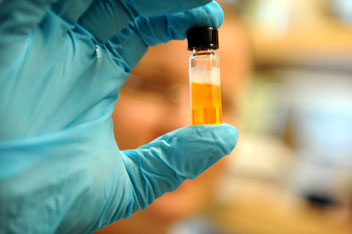Semiconductors are used as the material of choice for various electronic and optical devices thanks to their physical properties. The electronic glue developed in the USA will allow the advancement of the field in Ma'ar for nanotechnology

Researchers from the University of Chicago and the Lawrence Berkeley National Laboratory have developed an "electronic glue" that could accelerate the progress of semiconductor-based technologies, including: solar cells and thermoelectronic devices that convert, respectively, sunlight and waste heat into useful electrical energy.
Semiconductors are used as the material of choice for various electronic and optical devices thanks to their physical properties. Commercial solar cells, computer processors, and other semiconductor technologies often use relatively large semiconductor crystals. However, this size contributes to increasing their cost and preventing their use in large-scale applications, such as solar energy collectors on the roofs of houses.
For such applications, engineers see promising possibilities in semiconductor nanocrystals, which are sometimes only hundreds of atoms in size. Nanocrystals can be produced on a large scale relatively easily and can be used in the preparation of devices produced by injection printing and other solution-based processes. However, a problem still remains - the crystals are unable to efficiently move their electric charge from one to the other due to the presence of ligands on the surface - isolated bulky organic particles that "cover" the nanocrystals.
The "electronic glue" developed in the laboratory of researcher Dmitri Talapin at the University of Chicago solves the problem of ligands. The research team describes in the prestigious journal Science how the replacement of the isolated organic particles with state-of-the-art inorganic particles significantly increases the electronic coupling between the nanocrystals.
